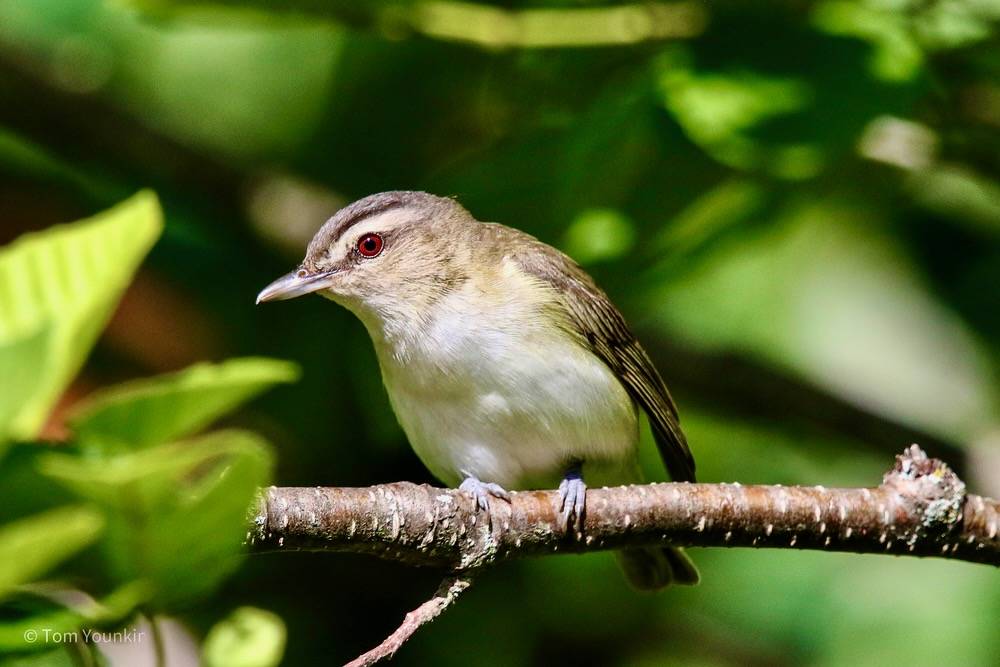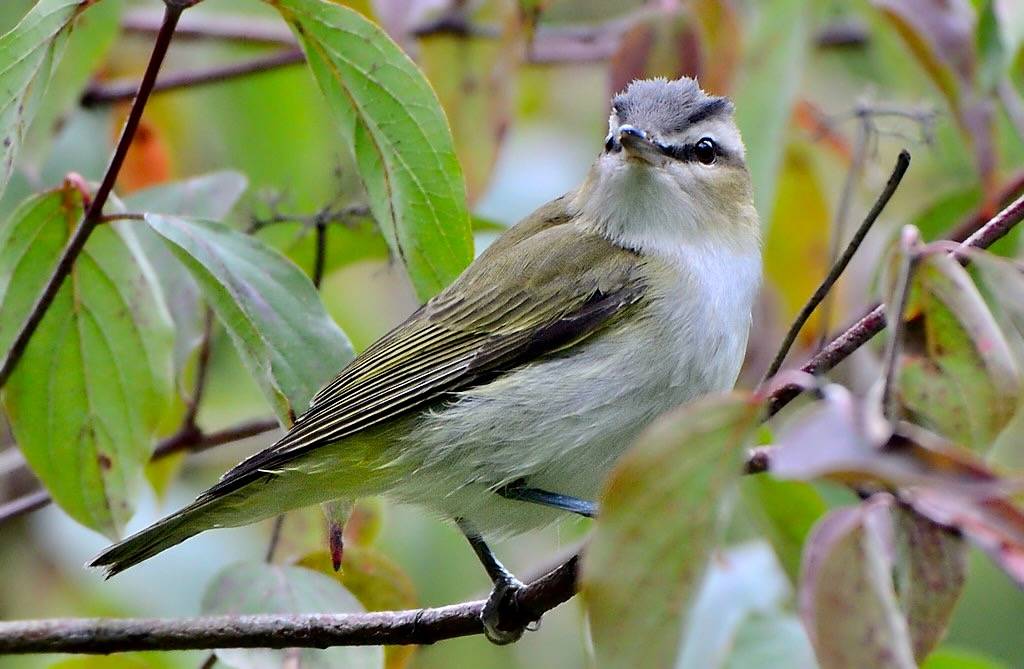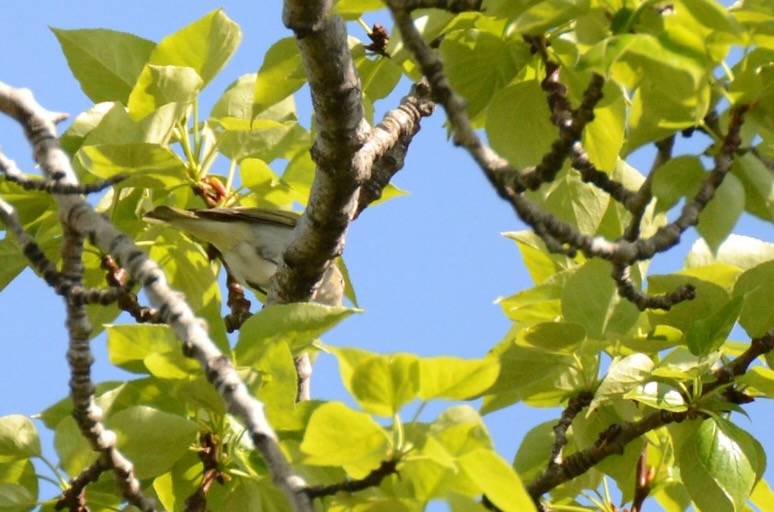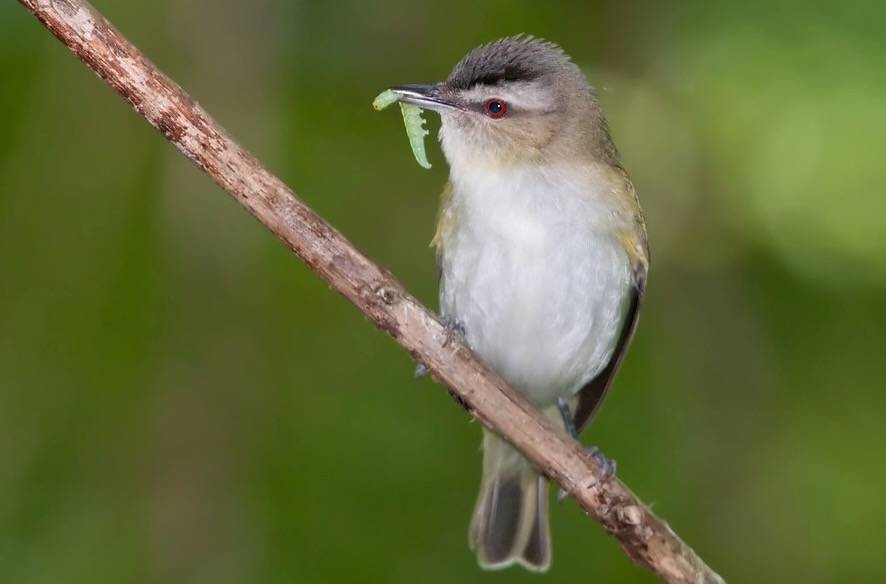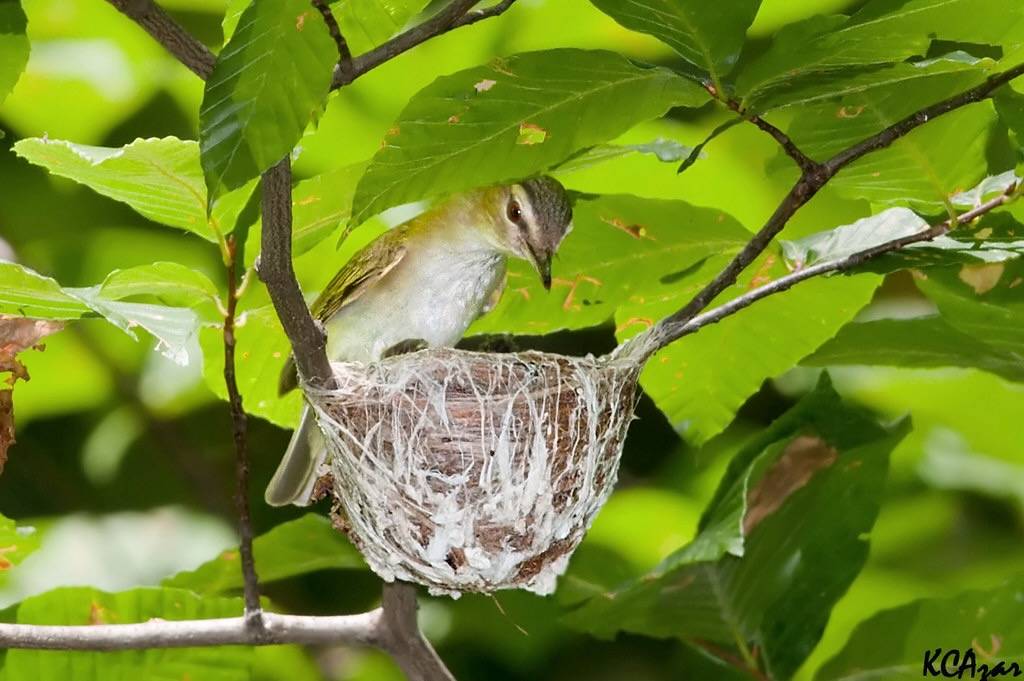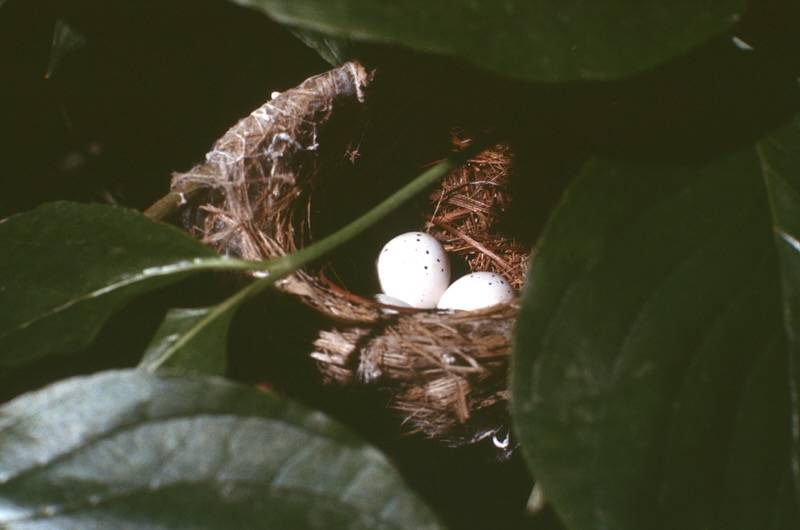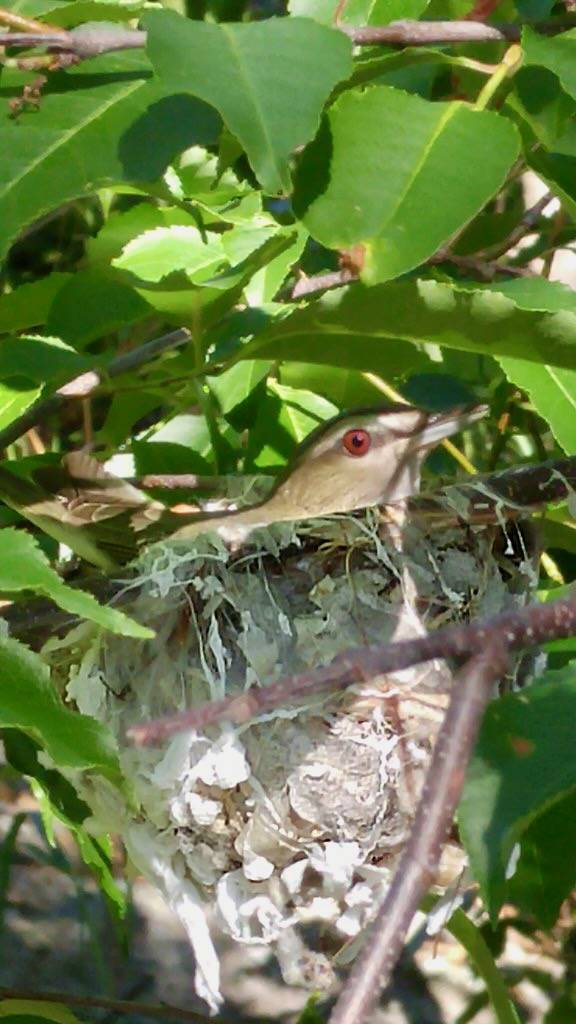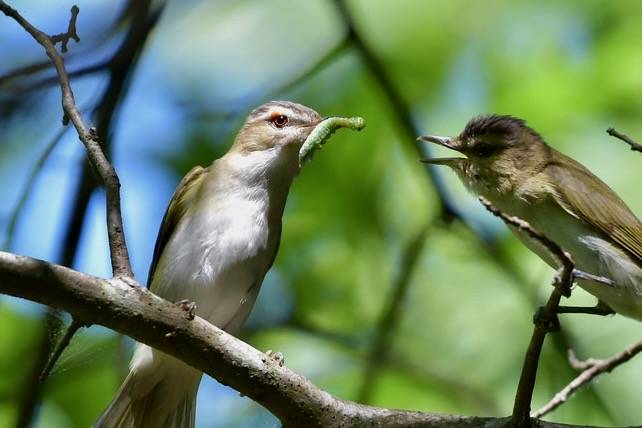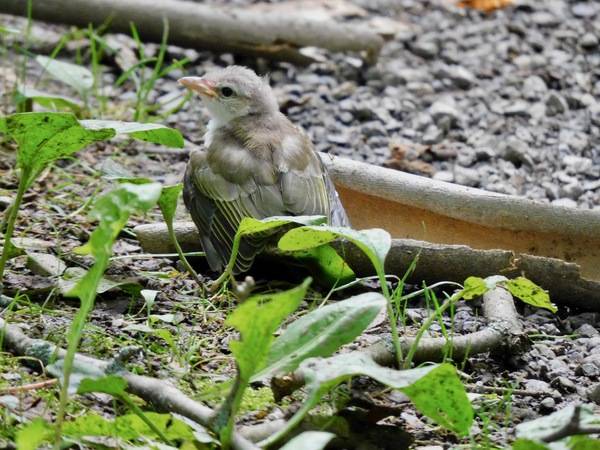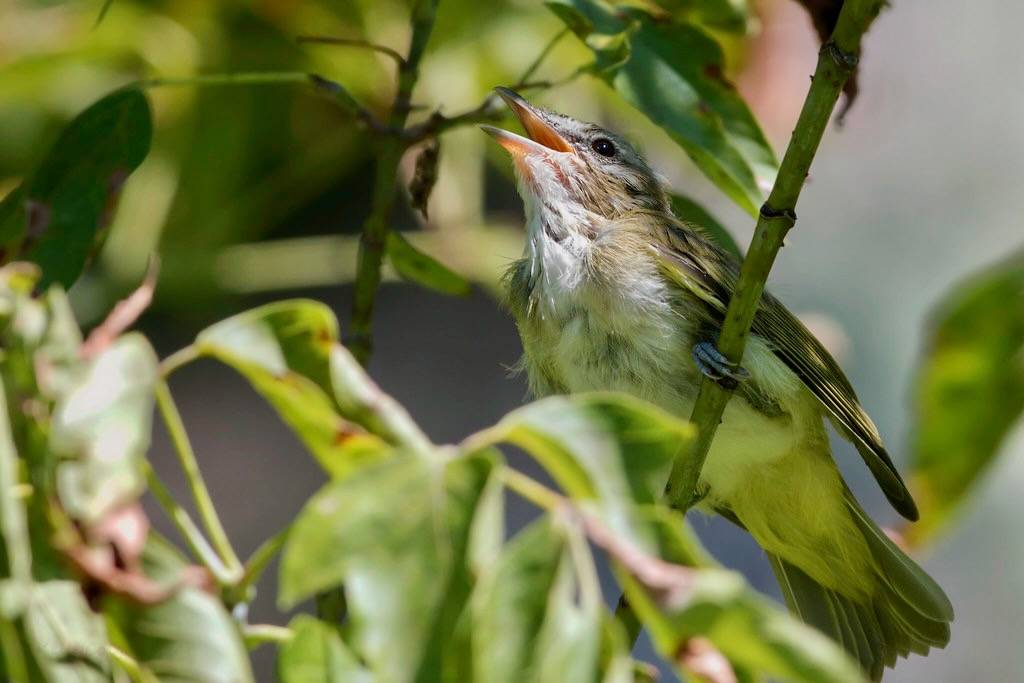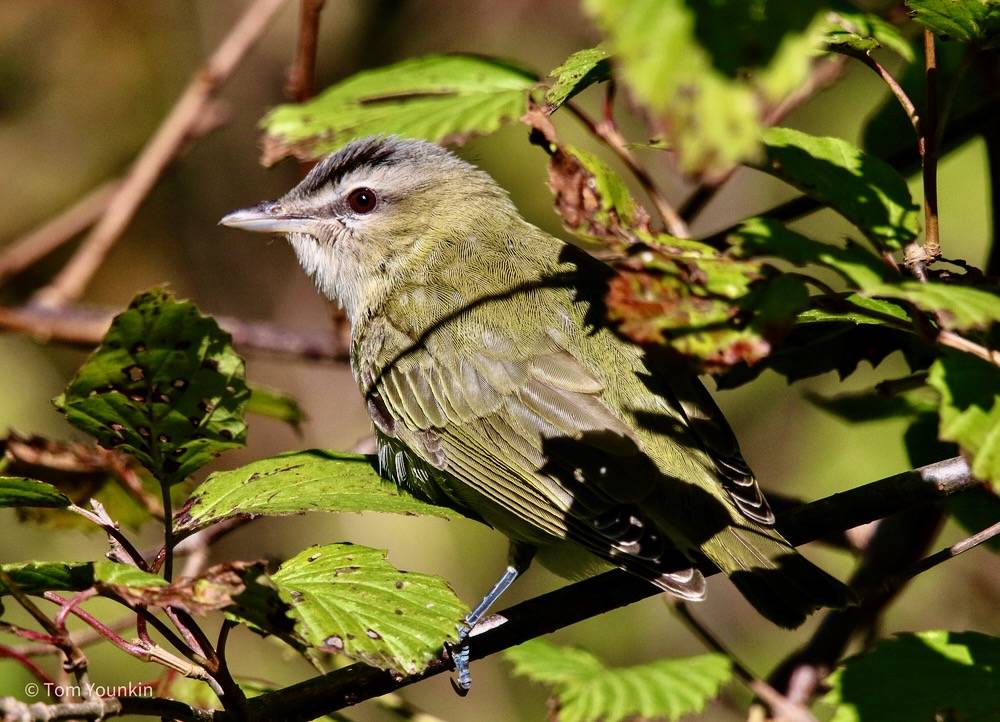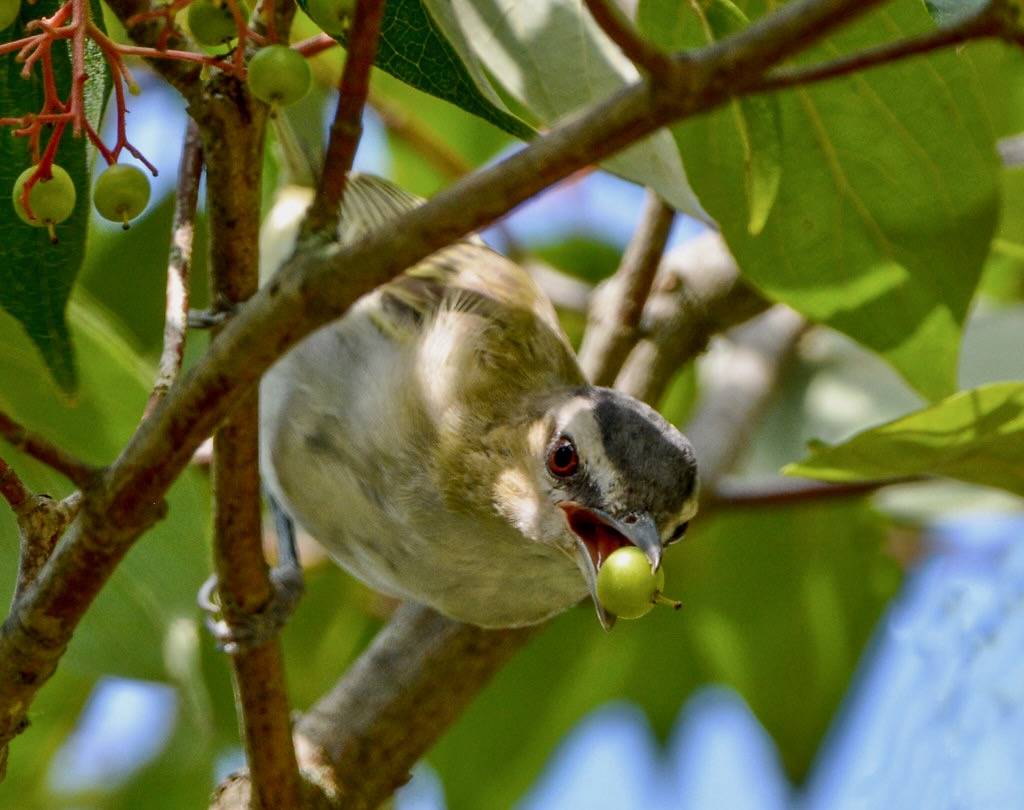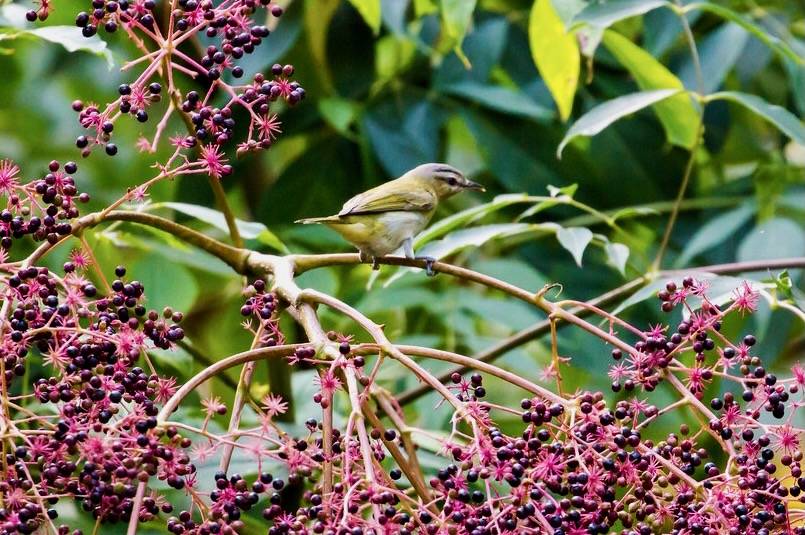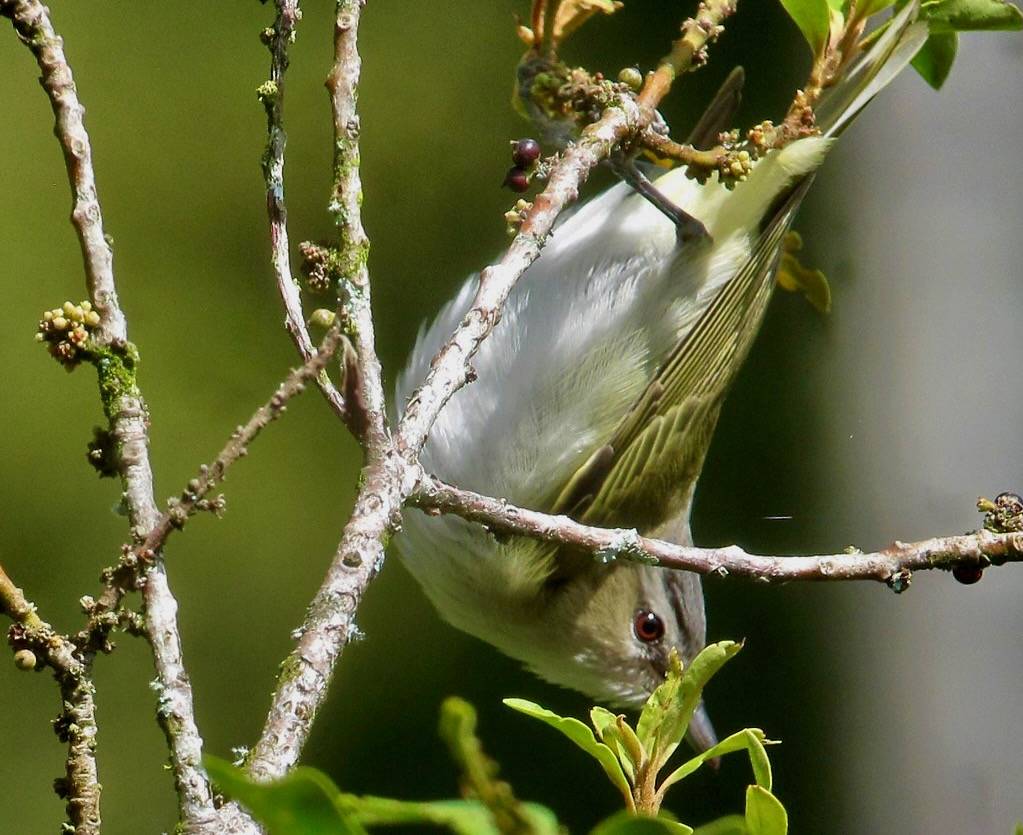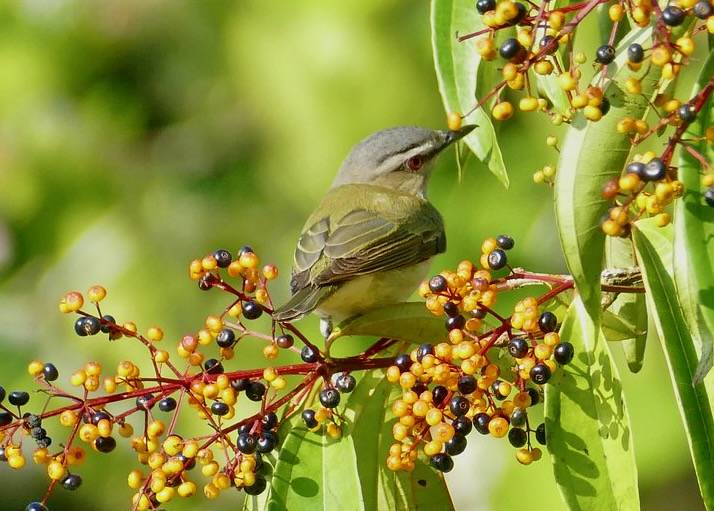Red-eyed Vireo
Based on data for 2002 through 2023, the Red-Eyed Vireo has only been recorded once in mid-May 2019 at Salter Grove. A likely area for sightings during spring migration might be the Upland Trail between markers U3 and U4 where there are clear views of tree crowns.
It is common and numerous in deciduous and mixed forests across North America during the warmer months. Nests are placed near openings in the forest interior rather than along edges. However, it also breeds in densely wooded suburbs, orchards and parks as long as the canopy foliage is sufficiently developed to support abundant insect prey. The woodland at Salter Grove is probably too sparse to meet this criterion.
Because its plumage of olive-green upperparts and light underparts blends so well into canopy foliage, the Red-eyed Vireo would go unnoticed if not for its incessant singing during the breeding season. The song consists of short phrases of one to five syllables that sometimes inflect upwards at the end to sound like questions followed by answers. Some consider it musical and robin-like whereas others think it is reminiscent of a preacher.
One study found that Red-eyed Vireos averaged 31 song types per bird and noted one bird sang as many as 71 different types in one day. A total of over 12,500 types of songs have been documented for this vireo species!
Yet another study recorded a single male singing 22,197 songs in 14 hours! Disappointingly, there was no mention of whether that male succeeded in getting a mate after that mind boggling effort. Thankfully for the female, song volume is reduced to a whisper during courtship when the pair is perched in close proximity.
The act of singing does not seem to interfere with the constant search for food from the underside of canopy leaves. Singing Red-eyed Vireos hop from twig to twig as they glean caterpillars and many other kinds of insects, and even snails, in between song phrases. They are acknowledged to be voracious consumers of insects harmful to trees such as the Spongy Moth (known as Gypsy Moth prior to 2022).
After the breeding season, the Red-eyed Vireo becomes a frugivore as it migrates across Central America to winter in the Amazon Basin. The chance of seeing vireos during fall migration at Salter Grove might be improved by specifically scanning plants with small berries that occur throughout the park, such as arrowwood, bayberry, dogwood, elderberry, sassafras, serviceberry, sumac, and Virginia creeper.

